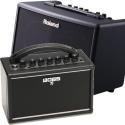Positive Grid Spark 40 Review: 40-Watt 2x4" Modeling Combo Guitar Amp
Street Price:
Manufacturer:
Product Links:

A Glimpse of the Future
The Spark Story
The Positive Grid Spark 40 was announced in late 2019 in an ambitious campaign promising a truly smart amp for the home that would revolutionize practice for guitar and bass players at an agreeable price. At the time Positive Grid (PG) were mainly known for their software guitar modeling apps 'BIAS Effects' and 'BIAS Amps' and they sought to bring this experience to the world of musical equipment that was only slowly adapting to the modern era of ubiquitous smart phones, wireless everything and 'The Cloud'. At the time they had limited experience building hardware so it was a bold claim. Furthermore they used a crowd funding style model, offering steep discounts as rewards to people willing to place pre-orders months in advance. By early 2020 they had won Music Radars 'Best of NAMM' award for guitar amps and were getting ready to ship nearly 25 thousand pre-orders. What could go wrong...
Well it turns out the pandemic did impact manufacturing which lead to significant delivery delays, up to 6 months for someone I know. Though many buyers weren't happy with the wait, more orders kept coming in and PG eventually cleared the backlog later in the 2020 having sold well over 100K units. It continues to be mega popular today with over 250K sales at the time of writing and PG claiming it to be the world's most popular practice amp. So now that the dust has settled and it's widely available in stores, does it deliver on that original promise and more importantly should you get one?
I've long thought that a lot of music tech gear was lagging on the software usability side and PG's logo is 'The Future Sounds Like This' so I decided to get my hands on the Spark 40 to see what all the hype was about. What I discovered was an amp that delivers so much for such an inexpensive compact unit and it does feel like seeing the future at least - freed from shackles of clunky PC software connected via USB. It's hard to keep remembering that this is a sub-$300 product and not want more though and it's not without flaws.
The Amp

The Spark 40 on the coffee table. Arguably stylish enough for a permanent place in the living room?
The Spark 40 aims for the look and feel of a small boutique amp and they've done a pretty job at making it home friendly as possible. You could argue it's attractive enough to warrant a place in a stylish lounge or bedroom although whether you actually prevail in that argument is another matter. When you add an electric guitar plus a lead you're still looking at a bit of mess so perhaps the spare room it is. It would be great if there was inbuilt wireless option available for this reason but remember we are talking about a $300 amp here so don't throw out your guitar cables just yet.

The control knobs on the Spark 40 amp itself.
The controls look pretty well organised on the top of the amp with about as many knobs as you could fit (10). There's an amp style selector and the usual amp controls (gain, 3 band eq and master) plus single knobs for levels of Mod, Delay, Reverb and Output (the real master volume). You can recall 4 patches via buttons next to a tap tempo button and these can also double as tuner lights which is pretty handy. They've done good job of making it look and feel like a classic amp here but there's only so much you can control this way. For more fine grained control of effect parameters or amp models you need to use the app. The problem you inevitably run into with this sort of setup is that of 'dueling' controls between the analogue knobs and the app or patch values. Short of expensive motorized knobs or led lights all over the place there really isn't a perfect solution which means that you are often operating blind when looking at the physical controls. On the Spark if you twist a knob it will change that associated setting to the knob value and the app shows this is real time. This could result in a quick jump from it's prior value which could be nasty surprise if you are turning the gain 'down' from 9 when it has actually been operating at 2.
There's also a tiny 'Music Volume' control next to the headphone output which separately sets the volume of external music via Bluetooth, the Aux in or USB. This includes jam tracks via the app and I found this a bit confusing at first but I guess it makes sense to be able to mix with your guitar. Others have complained that this tiny knob is too small making it hard to adjust to the correct volume.
Advertisement
The Capabilities
The Spark 40 is pitched as a home practice amp for electric guitar, bass guitar and acoustic guitar which is a lot to pack into one unit. If that's not enough it's also a pretty capable bluetooth speaker as well. It's intended to be used with PG's "Spark Amp" app via bluetooth which is available on the Android and IOS app stores. Positive Grid started off making effects and amp modelling apps and their experience shows here. The app has great ratings in both app stores, a rarity in the world of musical equipment whose apps are normally flooded with user complaints. And it really is a smooth and polished experience that 'just works' while offering a ton of useful options. Which is a good thing because there's no PC or Mac software available to control the amp via USB (apart from firmware updates). If you're uncomfortable about relying on a mobile app for much of the amp's functionality then this isn't for you.
Pairing to the app via the bluetooth is fairly simple and thankfully doesn't require any sort of registration. It seems to be happy to pair with new devices so if you've got the amp in your hands you can do it. Once paired you can connect at any time which takes a few seconds. I found the connection to be solid while you're using the app but if you put it in the background things can get a little glitchy and you may need to reconnect.
Controlling the amp models and effects in the app is fairly straightforward. The signal chain is laid out as a virtual pedalboard with 6 effect pedal type slots and one amp model as below:

You can't change the order but each pedal type slot (apart from the Noisegate) has various modeled pedals available. This offers a reasonable number of options without things getting too overwhelming. I count a total of 42 pedal effects, 25 Guitar amps and 4 amps each for acoustic and bass guitar not including the optional Jimi Hendrix expansion pack. There's a great list of the effects pedals here and the amp models here. It's not the 'everything plus the kitchen sink' approach that you can get in more expensive units or PG's software modelling apps but there's a pretty good selection.
The effects and amps are more or less fixed apart from firmware updates. They have added new effects and amps in a couple of firmware updates, some for free as well as the Jimi Hendrix expansion pack that's available for $20. I'm all in favor of being able to access new paid options via a store section but they add these as selectable options in the main interface which is annoying. The fact that you've loaded them on the amp, taking up memory that could be used for other effects doesn't sit well with me either. I'd really like to see the capability to download new effects/amps on the fly via the app in future iterations like PG does in their BIAS apps.
On the other hand the Spark "ToneCloud" provides over 10k Amp-and-FX presets for Guitar and Bass covering all manner of styles, artists and songs from Metallica to Dire Straits, 'Dirty Flexi' to 'Acoustic Ambience'. You can easily download these to your phone and amp but you do need to create an account for this. You can also share your own patches to the Tonecloud and they rank the most liked and downloaded in a variety of categories. At the time of writing the number 1 patch is in fact "Metallica" with over 155k downloads. It's a great heavy patch that had me playing those Locrian style riffs for longer than I'd planned. They can be a great source of inspiration or distraction but more importantly they can help players find the tone they're looking for without having tweak all those parameters themselves.
The models themselves are quite good and the amps and effects are realistic but there is an issue that we'll get to in a moment. Positive Grid were previously known for their excellent 'BIAS' software modelling apps and that experience shines through here. Apart from realistic amps, the effect that blew me away the most was the stereo reverb which really can make it sound like the reverberations are coming from the room you are in rather than the amp. On one patch I could swear there was an actual reverb spring sitting several meters from the amp. I don't know how they achieve this and it's a bit uncanny. For some patches you may actually want to tone it down a bit.
Muddying the Waters
When it comes to the sound though there is issue that we need to talk about. It's divided users between those that don't hear it, those that don't mind and those that think there's a problem. For me, the moment I started playing through the amp the sound coming from the speakers was overly 'bassey' for electric guitar. You won't have to look far to find many others experiencing the same, describing it as 'Muddy', 'Muffled', 'Boxy', 'Wooley' and complaining about the lack of brightness. It's surprising for such small speakers really but they do put out a lot of low end and that can obscure the high end, particularly the high midrange that's so important for guitar. Personally I can still hear and appreciate the tones which do sound good themselves but alongside a certain 'rumble'. I found myself using the bridge pickup to get the same tone as the bridge/neck mix on my humbuckers but that didn't quite work.

The Spark 40 on a table. Ideally it should be closer to the edge to reduce low frequency build up
There are range of ways to address this from easy to quite involved. Firstly if your amp is on the ground or near a wall this will increase the low end so try to lift it up to around ear height and away from the wall with the speakers pointing towards you. If it's on table then at least have speakers near the edge where they are facing. You can obviously turn the bass knob down for each amp model you use but this doesn't seem to be enough. PG for their part haven't acknowledged there's a problem but they did add Guitar EQ and Bass EQ pedals in a 2021 firmware update. Both offer 6 bands which is enough to allow you to tame the low end with some precision though this uses up the MOD/EQ slot in your chain so you can't also have chorus for example. Really what is needed is a separate global EQ option but my guess is there's no DSP power left for this. Why they released it with this frequency response is anyone's guess. Perhaps in trying to to sound like a bigger amp they went too far. Trying to cover music playback, guitar and bass amp duties at this cost is a big ask that's going to involve comprises. PG's newest release the Spark Mini does come with an 'EQ Scenarios' option as well as not sounding anywhere near as bassey in the first place.
There's a large and active modding community that's formed around the Spark 40 on facebook called "Spark Active Mods' where people talk about various hardware enhancements to the amp including addressing the 'muddiness'. From plugging the 'bass reflex' sound hole in the speaker cabinet, to padding the interior and even replacing the speakers you see many accounts of users modding their amps. Fortunately these are easier than they sound as the speaker cover is just held on by velcro and the speakers come out easily. There are also a lot of inexpensive 4" replacement speakers around.
Having said all this I still found myself liking the sound of most of the guitar patches after a few days playing with the amp. Maybe it's not that bad after all or perhaps it's just something you get used to. It does sound pretty impressive as a bass amp as you can imagine and does a good job on acoustic as well where that bassiness wasn't such an issue. For me it does well as a Bluetooth speaker where a bit of 'thump' is more suitable.
Smart Jam

The Spark 40 app's backing tracks and smart jam options
A big part of the appeal of the Spark system is being able to practice alongside backing tracks and actual recordings. They've done an amazing job of integrating with YouTube with an integrated player included in the app that has a large collect of pre-existing chord tabs that run alongside the music and video. I didn't come across any YouTube ads which is a handy bonus. For clips that don't have chords already their software automatically analyses the sound on the first run through and produces a tab. For fun I pulled up an old smartphone video of me and a friend at an open mic night playing an original song with less than 50 views on it and sure enough, after the first playthrough it produced an accurate rendering of the chords which is quite impressive. So it will work with basically any music on YouTube including the huge range of tutorials and backing tracks on there. For some popular tunes there are also suggested patches to use from the Tonecloud. The app also integrates with Spotify and Apple Music.
There's a specific 'Smart Jam' feature where you can play a short chord progression and it will produce an automatic bass and drum accompaniment for you to jam with. I didn't have so much success with this as the chords were too often misread and the backing tracks sounded a bit mediocre. I guess for jamming they'd be Ok but I think this feature still needs some work and others seem to feel the same. I couldn't find any way to manually enter chord progressions with this feature. Rounding out the experience there's a feature that allows you to take a record a video of yourself playing with your own imported music through the amp.
Cons
- Speakers sound 'muddy' for electric guitar sounds in particular
- Requires Mobile/Tablet for detailed control. No Desktop Software.
- Ads for expansion pack in the controls
- Gets so much right that it leaves you wanting even more
Pros
- Great wireless mobile app integration that 'just works'
- Good collection of Amp and Effect Models
- Compact 'Boutique Amp' looks suitable for the home
- Versatility - Stereo Guitar, Bass and Acoustic Amp as well as Bluetooth Speakers
- Excellent Practice Options
Overall
Positive Grid have taken software and hardware integration to another level with the Spark 40 producing a compact amp that's crazy versatile and a system that 'just works' for home practice use. They've shown the way forward in this respect and once you've seen what they can do it's hard not to want more - like an inbuilt looper, downloadable effects, a wireless guitar connection and what about battery power? You've got to pinch yourself and remember this a sub $300 amp. It's not without flaws either. For some, the bass heavy sound is an issue and while it can it can be addressed it is a hassle. But there are legions of fans who love the sound straight out of box. They've recently released the a new version the 'Spark Mini' that adds battery power and as well as global EQ 'Scenarios' as well as sounding brighter by default. If you want a home practice amp with all these features so easily accessible via your phone then the Spark 40 is your main option, perhaps rivaled only by the new Spark Mini and whatever Positive Grid have in store for us next.
Advertisement
Gearank High Notes

Gearank Recommended
| Website | Source | *Rating Value |
| Gearank | Daniel Barnett | 85/100 |
| Wired | Parker Hall | 80/100 |
| Guitar World | Rob Laing | 100/100 |



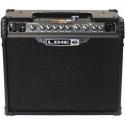
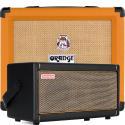
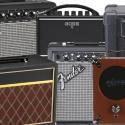
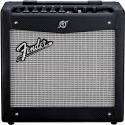
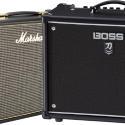
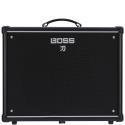
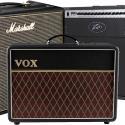
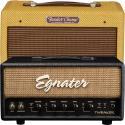 The Best Small / Low Watt Tube Amps - Combo & Amp Heads
The Best Small / Low Watt Tube Amps - Combo & Amp Heads